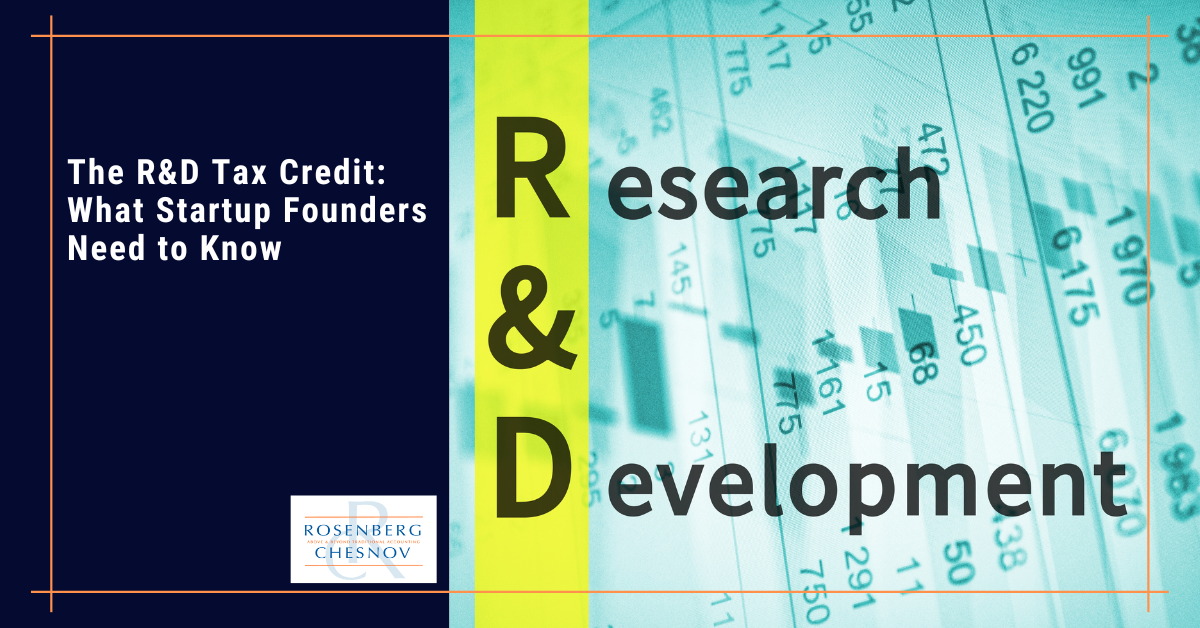What is the R&D tax credit?
The R&D tax credit, called the Credit for Increasing Research Activities, is a government-sponsored program to incentivize companies to invest in research and development activities. It is a financial incentive for businesses that engage in qualifying research to advance their products, processes, or technologies.
The R&D tax credit was initially introduced in 1981 as a temporary measure to stimulate innovation and technological advancement. However, due to its effectiveness, it has remained a permanent fixture in the IRS tax code. The program underwent further expansion with the enactment of the Protecting Americans from Tax Hikes (PATH) Act in 2015, making it more accessible to startups and small businesses.
This tax credit allows eligible companies to offset a portion of their federal income tax liability, alternative minimum tax (AMT), and sometimes payroll taxes. It is a dollar-for-dollar reduction in tax liability, which means that the company can reduce its tax liability by a certain percentage for every dollar of qualifying research expenses.
By reducing the financial burden associated with R&D expenditures, the tax credit encourages companies to innovate and stay competitive in their industries.
How does the R&D tax credit’s startup provision work?
The R&D tax credit’s startup provision is a specific aspect of the credit that aims to support and incentivize startups and small businesses to engage in research and development activities. It recognizes startups’ unique challenges in their early stages and provides them with additional opportunities to benefit from the tax credit.
Under the startup provision, eligible startups that have gross receipts of less than $5 million in the current tax year and no more than five years of gross receipts can claim the R&D tax credit against their payroll taxes. This means that startups can use the credit to offset their federal payroll tax liability, including the employer portion of Social Security and Medicare taxes.
The startup provision of the R&D tax credit allows qualifying startups to receive a benefit even if they do not have significant federal income tax liability, which is often the case for early-stage companies still generating profits. By utilizing the credit against their payroll taxes, startups can receive a tangible cash benefit that can be reinvested in their research and development efforts or other areas of their business.
It’s important to note that the startup provision of the R&D tax credit has certain limitations. The credit is limited to $250,000 per year for a maximum of five years. However, startups with significant qualified research expenses may be able to exceed this limit and utilize the credit against their income tax liability once they become profitable.
What are the four eligibility criteria for R&D tax credit qualifying expenses?
To qualify for the R&D tax credit, businesses must meet four eligibility criteria for their expenses to be considered qualifying research and development (R&D) expenses. These criteria help determine whether the activities and expenditures meet the requirements set by the Internal Revenue Service (IRS) to be eligible for the credit, and are as follows:
- Permitted Purpose: The research activities must aim to develop or improve a product, process, technique, formula, or software to create new or improved functionality, performance, reliability, quality, or cost efficiency. The purpose of the research should be to eliminate uncertainty or resolve technical challenges in achieving these objectives.
- Technological in Nature: The research must rely on principles of engineering, physical sciences, computer science, biological sciences, or similar hard sciences. It should involve applying scientific methodologies and utilizing scientific principles to evaluate and experiment with alternatives.
- Process of Experimentation: The business must demonstrate that it follows a systematic process of experimentation to evaluate and develop the desired outcome. This involves formulating hypotheses, testing and analyzing alternatives, and modifying the approach based on the results.
- Uncertainty: The business must demonstrate that there was uncertainty at the outset of the research activities. Uncertainty refers to situations where the capability, method, or optimal design of a product or process is not readily known or determinable by competent professionals.
By satisfying these criteria, businesses can potentially qualify for significant tax incentives that help offset the costs associated with their research and development initiatives.
What expenditure is ineligible?
Examples of ineligible expenses include non-qualifying research activities like market research and routine data collection, costs related to acquiring existing property or duplicating existing products, capital expenses for land, buildings, and equipment, expenses for research conducted outside the United States, and costs associated with reverse engineering.
It’s important to carefully assess expenses to ensure they meet the eligibility criteria before claiming the R&D tax credit.
How is the R&D tax credit calculated?
In the United States, there are two primary methods for calculating the R&D tax credit: the regular credit method and the alternative simplified credit (ASC) method.
- Regular Credit Method: Under the regular credit method, the R&D tax credit is calculated as a percentage of qualified research expenses (QREs). The QREs include wages, supplies, and contract research expenses incurred in conducting qualified research activities. The credit rate for the regular credit method is generally a percentage of eligible expenses, which can vary based on factors such as the taxpayer’s historical qualified research expenses.
- Alternative Simplified Credit (ASC) Method: The ASC method provides a simplified approach for calculating the R&D tax credit. It uses a fixed-base percentage (FBP) to determine the credit amount. The FBP is calculated by dividing the taxpayer’s QREs by the average gross receipts for the previous four tax years. The credit rate for the ASC method is a predetermined percentage of the FBP.
Companies can choose between these two methods to calculate the R&D tax credit, selecting the one with a higher credit amount. It’s important to note that specific rules and limitations apply to each method, and taxpayers should consult with tax professionals or advisors familiar with R&D tax credits (like us!) to ensure compliance with tax laws.
How is the R&D tax credit claimed?
To claim the R&D tax credit, businesses must fill out and file the appropriate form, which will vary depending on your business structure. For example, corporations use Form 6765, Credit for Increasing Research Activities, while pass-through entities report the credit on their individual or partnership tax returns.
On the form, you must identify qualifying expenses and provide supporting documentation highlighting how these expenses meet the requirements outlined under Internal Revenue Code 41.
However, the process can be complex, and, again, it is advisable to consult a tax professional or R&D credit specialist to ensure all qualifying activities and expenses are accurately accounted for.
Would you like some help?
If you are a client and would like to book a consultation, call us at +1 (212) 382-3939 or contact us here to set up a time.
If you aren’t a client, why not? We can take care of your accounting, bookkeeping, tax, and CFO needs so that you don’t have to worry about any of them. Interested? Contact us here to set up a no-obligation consultation.
Stay informed
Interested in receiving updates in your mailbox? Check out our newsletter, full of information you can use. It comes out once every two weeks, and you can register for it below.





